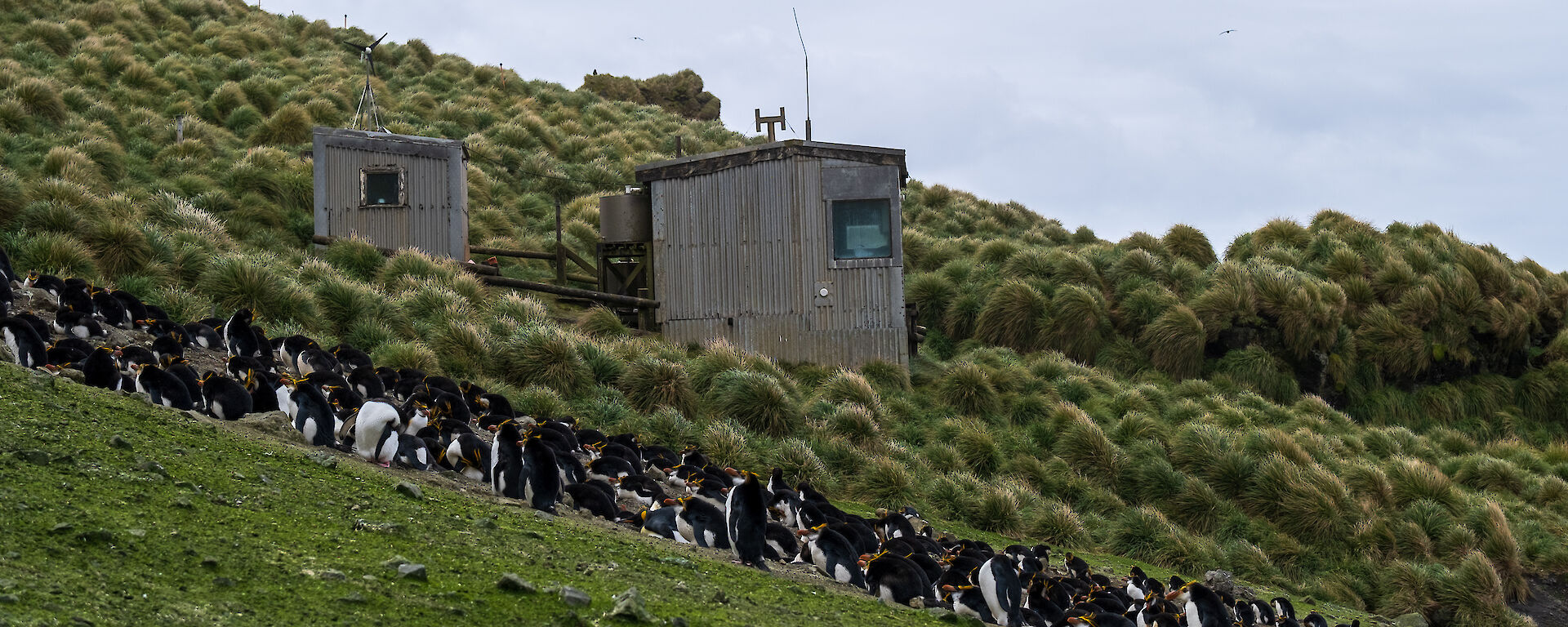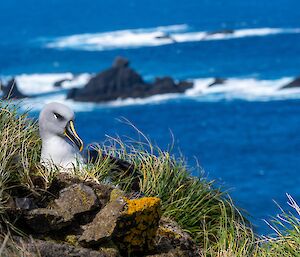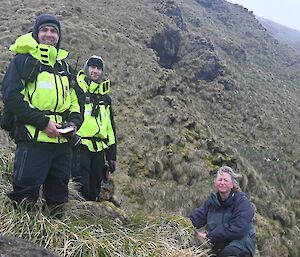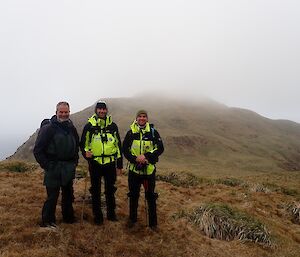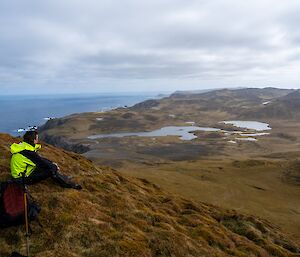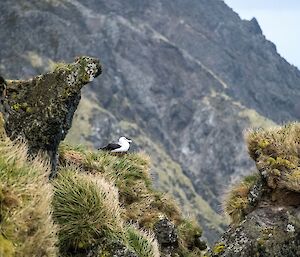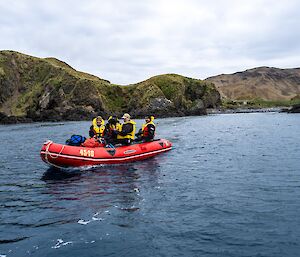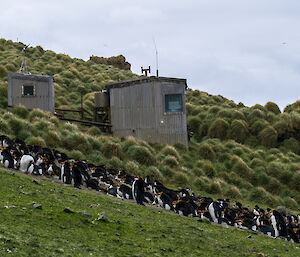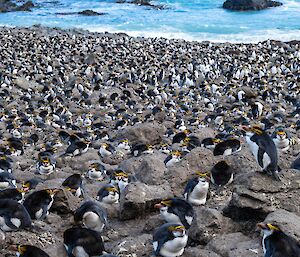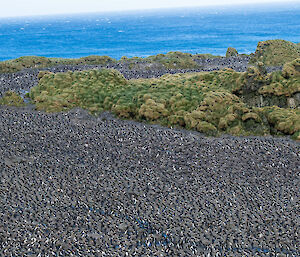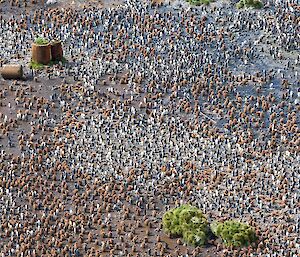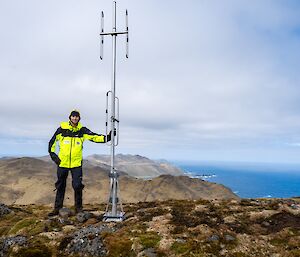Recently myself and resident island chippy Aaron were lucky enough to join Tasmanian Parks and Wildlife rangers Paul & Helen on the southern slopes of Petrel Peak, located in Macquarie Island’s southwestern corner. Our task was to assist in the ongoing albatross census which monitors Macca’s population of grey-headed and black-browed albatross.
Our trip began with a short jaunt from VJM to Hurd Point. Being about as good a day as you can get at Macca – wind below 10 knots and a bluebird sky – we decided to hike the island in its entirety. Around 36.5km saw us reach Hurd Point Hut via the Overland Track and Tiobunga Track in around 9ish hours. Despite recent warnings of increasing UV from our station doctor Kate, the back of my neck was the biggest casualty of the day. After slurping down some delicious Italian cuisine courtesy of Paul, we all got some much-needed rest to prepare ourselves for the following day.
Waking to a fine morning, we didn’t waste much time getting over to Petrel Peak. Starting the short walk with a trip up the dreaded Hurd Grassy Jump Up was made all the more bearable by having sooty albatross fly circles around us on the way up. Once we arrived we split into two groups and began traversing the slopes in search of the albatross, recording the relevant data upon each discovery. When a bird was found we would record the following.
(Example)
ID Number - NC01
Species: Grey-headed or black-browed
Status: BOE (Bird on Egg) BON (Bird on Nest) FN (Failed Nest) EN (Empty Nest)
GPS: Waypoint
Conduit Number: Unique identifying stake
Metal Band Number: If the Bird had one
Darvic Band: Band Colour, Number & Number Colour (If it had one)
Notes: Anything noteworthy (often if it was accompanied by another bird).
Description: (Optional) Where the nest was located.
Often accessing the birds proved to be the trickiest part of the job, requiring lots of creative manoeuvring to find the best approach. However, it was well and truly worth it to have the opportunity to see these incredible animals up close in all their beauty. After becoming more efficient on both the terrain and data acquiring techniques, we quickly covered over half the nesting area and called it a successful day.
It was decided a “Hut day” would be taken to rest the legs and catch up on the all-important data entry process of deciphering Aaron and my hieroglyphic notes. After a nice visit to the nearby Royal Penguin Rookery I decided to take on a Macca tradition that had eluded me until this point – crafting a loaf of Hut Bread. Under stewardship of Hut Bread veterans Aaron and Paul, my debut loaf of “classic white” was dubbed a “true masterpiece” - (Aaron Coleman, 2023). Feeling inspired, I treated them to dinner with my own adaptation of a Moroccan chickpea curry.
The following day it was back up the Jump Up and across to Petrel Peak to count the remaining albatross. Paul and I took the high line while Helen and Aaron grabbed the low hanging fruit at Black-Browed Corner. All up over 150 nests of varying status were identified.
Aaron and I began our journey back to VJM the following day, dropping by the always awe-inspiring Lusitania Bay lookout to get a look at the largest king penguin rookery on the Island. Upon arriving at Green Gorge Hut, we received a welcome sat-phone call.
“The weather is looking good tomorrow. Are you interested in a lift home in the boats?”
We didn’t need much convincing and gladly accepted. This offer allowed Aaron and me time in the morning to take a quick trip over to the Mt Waite Ch19 VHF repeater and swap out a bent antenna mounting base plate. Not long back at Green Gorge 3 IRB’s rounded the corner of the bay. A well-oiled machine from recent outings, they landed, loaded us in and zipped us home. A week well spent exploring Macquarie Island.
Nelson Clegg
Communications Technical Officer of the 76th ANARE – Macquarie Island.

